Marketing Stack Management Guide
Your step by step guide to marketing stack management
Introduction
A lot of change can unfold in the transformative digital world over the course of a year - we don’t have to look much further than the progression of the Marketing Technology Landscape to be reminded.
But from the beginning of 2020, we saw (and continue to see) the acceleration of digital transformation at a rate like never before. A report from Twilio showed a staggering 97% increase in digital transformation with an accelerated digital strategy by 6 years over the course of the pandemic, with another report by McKinsey showing that they had recognised there had been 10 years of growth in US e-commerce penetration within the space of just 3 months.
Following research collated in the Gartner Marketing Technology Survey 2020, it is reported that almost 60% of marketing technology leaders say they expect moderate to severe cuts to their martech budgets and that 35% of marketing technology leaders are initiating a process to overhaul their martech stack.
While some businesses have been forced to slow down, for some the pandemic has accelerated rapid growth. Whichever end of the scale businesses may have fallen, for every company these circumstances have forced some level of change to their martech stacks. Whether that’s scaling up, scaling down or re-building altogether.
This Marketing Stack Management eBook is a practical guide for anyone looking to build and maintain a powerful martech stack. Taking it step by step through:
Part 1: The Theory
- Exploring what exactly is a martech stack and what is a tech stack.
- Starting with identifying the problem we want our tech to solve with a business use case.
- Discovering what types of tools exist and what problems they each solve.
Part 2: The Practice
We will then put theory into practice by:
- Assessing the martech maturity of the current stack and identifying where we might have gaps.
- Looking at the process of stack design, from selecting the approach to the framework.
- Looking at how to architect the stack.
- How to map and connect data across the stack.
- How to keep on top of the all-important management and maintenance of the stack.
Part 1: The Theory
What is a marketing technology stack and what solutions are there?
In part 1 of this guide, we’ll define exactly what we mean by a ‘marketing stack’ and how this differs from a tech stack, exploring which tools and functionalities power the marketing functions.
We’ll begin with business use cases and the importance of identifying the problem we’re looking to solve before jumping straight into the tools. Then, we’ll look at an overview of all 49 categories within the Marketing Technology Landscape and view industry insights into some of the most popular stack categories recorded in 2020.
What is a Marketing Stack? And What is it Not?
A marketing stack (or martech stack) is often interchanged with a tech stack. When we say ‘marketing stack’ we mean tech for marketing, sales, customer success and the internal teams business operations. However, our definition of marketing stack management does not include engineering, DevOps, product, IT & security, HR, or finance tech stack solutions.
While we won’t dive into the debate of exactly what tool or category should be part of a marketing stack, (it’s certainly not 100% clear cut) let’s just say it’s not every tech tool that a company uses. We define a marketing or martech stack as a collection of software tools and technologies that marketers use to manage their marketing activity.
From marketing tool selection, to building and integrating a complete marketing stack – the marketing stack is the technology that powers marketing functions. These include advertising and promotion, commerce and sales, content and experience, data, management plus social and relationships. This could be anything from email marketing, search, measurability, multi-channel automation, personalisation, sales enablement and much more.
But it’s not that simple. The speed of technological change, the digitisation of the world, disruptive new technologies, complex customer journeys and changing consumer behaviour all make it extremely difficult to achieve a complete and fully integrated martech stack. Understanding and selecting the right tool set, implementing, configuring, integrating, and driving their adoption by the team is often more than a full-time job.
Scott Brinker’s Marketing Technology Landscape of 8,000+ vendors does a good job of showing the complexity and chaos marketers need to navigate through. Originally published in 2011, to the most recent edition published in 2020, we have witnessed the industry increase by an astounding 5,233%.
While it is great to see such exponential growth within the industry and more innovative tools hitting the market, marketers can find themselves drowning in a sea of solutions not knowing which tools deliver value. And then comes along the problem of ‘Shiny Object Syndrome’. Many marketers are guilty of getting excited and distracted by shiny new tech instead of focusing on the essentials of their existing stack management.
Focusing on the fundamentals of stack management and selecting tech the right way are the 2 key ingredients to stack management maturity and success. And while a healthy stack won’t develop a sell-out product, write great copy or build a memorable brand for us, it can enable us to optimise every stage in the customer marketing funnel cycle from attracting, engaging, converting, and understanding our customer.
What Types of Marketing Tech Do You Need in Your Stack?
With a walkthrough of the distinction between a tech stack and a martech stack, we can now move on to looking at the martech category types that exist.
Business Use Cases
But before diving straight into the categories, we need to ask what it is we’re trying to achieve. By developing the business use cases, the business goals and the problems we're trying to solve to inform the martech categories can help achieve this.
For each of our business use cases we should document specifically what we want the tool to help solve. Let’s walk through the process of doing this:
- As a < type of user >
- I want to < some goal >
- So that < some reason >
- Solutions(s) - The martech categories that match the above
- Short list of tech providers – An understanding of the category alone is not sufficient, there will be plenty of providers to pick from. We will need to create a short list of providers matching our more detailed use cases.
Here’s an an example.
All too often, businesses get this the wrong way around, picking a logo without having clearly documented what the tool intention is. If we can’t answer what problem a provider intends to solve it’s going to be difficult to measure its impact.
Category Descriptions
So, now that we’ve identified the problem we want to solve with our business use case, it’s time to think about the solution.
We have established there are a fair few martech solutions on the market (over 8,000 to be exact) so, it is easy to feel like we’re searching for a needle in a haystack when trying to narrow in on which tools we should be implementing into the stack.
Let’s take a step back and start with the categories. We can narrow down the 8,000+ tools to the 49 categories across the Landscape, but that is still an overwhelming amount to consider (see below) and in fact, we could add at least another 10 categories from marketing market analysts and vendors on top.
Advertising & Promotion
The Advertising & Promotion category focuses on enabling and optimising marketing and promotional services and creative distribution.
Mobile Marketing
Tools within this category specialise in the distribution and optimisation of advertisements across mobile apps and services.
Display & Programmatic Advertising
Tools within this category manage the spend and optimise the distribution of ads across multiple online mediums.
Search & Social Advertising
Tools within this category manage and enable advertisements to be displayed in response to specific internet searches and on specific social media platforms.
Native/Content Advertising
Tools within this category help to increase lead generation, conversion and sales from native advertisements displayed online.
Video Advertising
Tools within this category enable the production, publication and management of videos used for advertising purposes.
PR
Tools within this category track and monitor results from media placements and brand permanence from public relations.
Tools within this category assist with the printing process of physical materials.
Content & Experience
The Content & Experience category focuses on enhancing the customer experience, from data collection to customer engagement. The subcategories are broken down into the following:
Mobile Apps
Tools within this category are specifically designed for use on a smart device (e.g., phones and tablets).
Interactive Content
Tools within this category are designed to increase engagement with the target audience through interactive content e.g., online calculators and eBooks.
Video Marketing
Tools within this category enable the production, publication and management of videos used for marketing purposes.
Email Marketing
Tools within this category enable communication to an audience via email often by enhancing automation and personalisation.
Content Marketing
Tools within this category enable the creation and publication of consumable online material such as videos and blogs.
Optimisation, Personalisation & Testing
Tools within this category optimise testing to deliver insightful data about an audience and applying the results into personalised campaigns at scale.
DAM (Digital Asset Marketing)
Tools within this category helps manage all the digital assets (images, videos, audio files etc.) within one platform.
SEO (Search Engine Optimisation)
Tools within this category scan and audit the site, highlighting areas of improvement to boost online visibility.
Marketing Automation & Campaign /Lead Management
Tools within this category deliver automated and personalised marketing messages at scale to a specific audience based on triggers or scheduled timings.
CMS (Content Management System) & Web Experience Management
Tools within this category including content management systems and digital experience platforms (DXPs) enable the management, delivery, and optimisation of digital experiences throughout the customer journey.
Social & Relationships
The Social & Relationships category focuses on enhancing and managing customer relations. The subcategories are broken down into the following:
Call Analytics & Management
Tools within this category measures and manages phone calls for marketing and sales purposes.
ABM (Account Based Marketing)
Tools within this category enable the production, management and reporting of personalised campaigns based on high value accounts.
Events Meetings & Webinars
Tools within this category assist in the planning and production of events and meetings. From scheduling, streaming to hosting events.
Social Media Marketing & Monitoring
Tools within this category enable an organisation to track analyse and respond to activity on their social media platforms.
Advocacy, Loyalty & Referrals
Tools within this category aim to keep existing customers engaged by offering rewards or discounts based on their past purchases or referrals.
Influencers
Tools within this category are designed to assist brands from finding suitable influencers, managing the campaigns and reporting.
Community & Reviews
Tools within this category are designed to manage online engagement and reviews.
Conversational Marketing & Chat
Tools within this category enable online communication between the customer and the business. These can include live chat platforms with a representative or an artificial intelligent solution such as a chatbot.
Customer Experience, Service & Success
Tools within this category measure customer success such as surveys and forums.
CRM (Customer Relationship Management)
Tools within this category organise and manage interactions with customers and potential customers.
Commerce & Sales
The Commerce & Sales category focuses on software for sales intelligence, e-commerce and affiliate marketing. The subcategories are broken down into the following:
Retail, Proximity & IoT Marketing
Tools within this category track and engage with a target audience based on real-life activity. E.g., location plays a big part here.
Channel, Partner & Local Marketing
Tools within this category enable establishing a presence in various local markets.
Sales Automation, Enablement & Intelligence
Tools within this category enables and accelerates sales team's performance through a range of different platforms and apps.
Affiliate Marketing & Management
Tools within this category manage the relationship and payment for third-party promotions and services such as bloggers and other third-party websites.
Ecommerce Marketing
Tools within this category optimise and enhance the experience of selling and shopping for products online.
Ecommerce Platforms & Carts
Tools within this category are used to sell, distribute, and manage products online.
Data
The Data category enables the access, management, and integration of data across the entire stack. The subcategories are broken down into the following:
Audience/Marketing Data & Data Enhancement
Tools within this category are used to analyse audiences and generate customer data with additional insights.
Marketing Analytics, Performance & Attribution
Tools within this category focus on measuring marketing performance such as KPIs, ROT and ROI.
Mobile & Web Analytics
Tools within this category provide tracking and insights to online activity via mobile or web.
Dashboards & Data Visualisation
Tools within this category display existing numeric data in visual formats such as charts or graphs.
Business/Customer Intelligence & Data Science
Tools within this category provide cover data visualisation and data analysis and insight.
iPaas, Cloud/Data Integration, RPA & Tag Management
Tools within this category consist focus on connecting multiple software applications together.
DMP (Data Management Platforms)
Tools within this category collects, organises, and activates first-, second- and third-party audience data – from any source. Including online, offline and mobile.
Governance, Compliance & Privacy
Tools within this category help audit, define and manage processes, and ensure data privacy and compliance is maintained.
CDP (Customer Data Platform)
Tools within this category create a persistent, unified customer database from first-party data that is accessible to other systems.
Management
The Management category focuses on internal teams, operations and processes. The subcategories are broken down into the following:
Talent Management
Tools within this category assist internal teams to manage the recruitment, training and development of people.
Product Management
Tools within this category focus on bringing a new product to market or developing an existing one.
Budgeting & Finance
Tools within this category help with modelling and managing marketing budgets and payments.
Collaboration
Tools within this category help manage and enable collaborative ways of working across a team.
Projects & Workflow
Tools within this category help manage marketing programmes, projects and workflows.
Agile & Lean Management
Tools within this category help support agile and lean management working.
Vendor Analysis
Tools within this category help analyse, select and manage martech vendors.
While we should familiarise ourselves with the types of tech solutions that are on the market, it’s important to refrain from assuming we should be implementing a tool from every one of these categories. Remember to refer back to the business use case and start with identifying the problem before jumping into the possible solutions.
We’ll also look at breaking down the 49 categories listed above into a more manageable approach of the MarTech Alliance Fundamental Category Layers in Part 2.
What Tech Do Users Most Commonly Select?
Defining what an organisation is trying to achieve and the solutions that can enable that is the best way to select tech. But it is also helpful to gain insight into some of the most popular tool types in the market.
CabinetM, who is no stranger to marketing stacks, released their research paper, StackInsights, in January 2021 detailing some of most popular martech categories in 2020:
Most Popular Technology Categories in B2B Stacks
- Marketing Automation
- Productivity & Workflow
- Web Optimization
- Search Engine Marketing (SEM)
- CRM
- Web Development & Design
- Analytics & BI
- Social Media Networks
- Lead Generation
- Sales Operations
- Sales Enablement
- Events & Tradeshows
Most Popular Technology Categories in B2C Stacks
- Web Optimization
- Productivity and Workflow
- Marketing Automation
- Analytics
- Web Development & Design
- Search Engine Marketing
- Social Media Networks
- Audience Segmentation, Intent, Targeting
- Enterprise Data Management
- CRM
- Content: Design, Production, Distribution
- Events & Tradeshows
This isn’t to say that we should be implementing all solutions listed in our company type. But it does give us some useful insights into stack trends in the industry, which may lead us into investigating the most common categories and asking whether they might match our business use cases.
Part 2: The Practice
How to build and maintain a powerful and scalable stack.
It’s time to put the theory into practice. In Part 2 of this guide, we’ll look at how to assess the maturity of the current stack and identify where there might be gaps to implement new tools.
We’ll walk through how to design the stack from selecting the most suitable approach to the stack architecture and design blueprint.
In this section we’ll also get down to the data and provide a high-level overview of data plumbing and data flows.
Then, we’ll move on to the all-important maintenance and management. We’ll take it through a step-by-step process to keeping the stack healthy.
Marketing Stack Maturity
No doubt you’re reading this with a marketing stack already in place versus a blank piece of paper, so we’ll start with an audit of the current stack.
To enable us to mark the maturity of the current stack, we’ll start with a customer experience mapping exercise married with tech at each touch point as well as internal discovery meetings, workshops and surveys with key departments. Through this work we will answer the key questions that follow on in this section.
We will use our insights gathered from our martech maturity to run a gap analysis exercise. where we will mark our tools into one of the following categories:
- Retain - If we are happy with the tool and its performance, we will keep it in play.
- Optimise – If the tool is not being fully capitalised, we need to make sure we are optimising it. This might include a platform upgrade, configuration or upskilling the team through internal training so they make better use of what is available.
- Replace – We still need the tool type, but the current solution is not fit for purpose, so we are looking to replace it.
- Sunset – If we no longer have a need for the solution or perhaps already have a preferred tool that provides same function, we should look to remove the solution from the stack.
- Invest – Throughout the process we may have identified a gap in the stack and look to invest in a new solution.
Using the below questions as an index to our martech maturity will allow us to score our current and target states. Using this assessment, we can identify areas of high performance, as well as identify areas which require development. This will ultimately act as a base which we will build on.
Stack Completeness: Do You Have the Tech You Need?
- What? – We need to establish what tools are already in play in order to identify where we might need to implement a new solution.
- Why? – Compiling a complete list of all marketing technology being used across the organisation will establish a single source of truth and enable us to identify where there are gaps in the stack.
- How? – A great place to start is by mapping the customer journey first and then marrying the tools to each point. We can do this by starting with a marketing and sales funnel and then adding the solutions within our organisation on top. Another method of running a gap analysis is by using the Marketing Technology Landscape categories to cross reference which additional tech solutions we currently have and what we may need in the future.
Stack Connectivity: Is Your Stack Joined Up?
- What? – How we connect and integrate the data and systems already in place is crucial to achieving stack effectiveness. This is often the most challenging part of stack management.
- Why? – One of the key components of successful stack management is our data modelling and architecture.
- How? – Visualise the data and workflows within the stack by mapping the connections from tool to tool, documenting where data is pushed and pulled throughout the stack. The Marketing Architect or Marketing Engineer in the team would be the one that explores this more deeply and propose the best possible solution.
Platform Utilisation: Is the Tech Being Used?
- What? – Is the tech being used to its full level of capability and functionality? This is not as simple as it sounds. According to the Gartner Marketing Technology Survey 2020, marketing leaders report they utilise only 58% of their martech stack’s full breadth of capabilities leading to stacks compiled with underutilised and disparate tools.
- Why? – Not only is it important to address which tools are being used, but to what extent are all the features of that tool being utilised. However, complete utilisation is not a prerequisite for success. We should consider that a company may not use a tool’s entire set of features simply because they do not need to.
- How? – Asses the team’s utilisation of the martech stack by conducting regular audits; log files, surveys, interviews, etc. Define what feature sets for each tool we actually need and then measure their usage. The aim here is to find what is or is not being used and why.
Platform Sentiment: Do People Love It or Hate It?
- What? – Platform sentiment is about understanding what the team loves and hates about the tools in the stack.
- Why? – If a platform is not being utilised, it is important to understand why. Is it because it offers additional functionality that is not needed? Because the team is lacking the training and documentation to use it? Or because they simply do not like the UX/UI? The answers to these questions will have a strong impact on platform utilisation. There may be some users that have positive sentiment of tools that could help drive the advocacy of others in the team.
- How? – Run internal surveys across the team to gather user feedback. Ensure enough information has been gathered to truly understand why the team have these opinions.
ROI/ROT: What’s the Return on the Tech?
- What? – What does the tech deliver and how valuable is it to the organisation?
- Why? – We need to weigh up the cost versus the return in order to establish the true value of the solution.
- How? – We need to start with why the tool was purchased in the first place and refer back to the use case - whether it was intended to drive revenue, reduce cost or save time, and ask if it still delivers.
We are looking to quantify its value in real terms e.g., hours spent before the solution was in place versus after. Then assign a value to that time saving; is there a headcount reduction or were there agency costs which have been removed with the introduction of our key tech solution?
Reverse engineer what revenue has been directly generated from the tool's investment or the improvement in marketing maturity that has been possible from the investment.
Risk Mitigation: What Risk Governance Do You Have in Place Around Your Stack?
- What? – Data, system security and privacy risks need to be carefully assessed and the necessary governance put in place to minimise these risks.
- Why? – From the risk of compliance breach around areas such as GDPR and CCPA, to the risk of data leakage, the threat is real and the consequences very severe. We risk facing legal, financial (fines) and reputational (brand trust) penalties.
- How? – Collaboratively with IT, legal and compliance teams review and document the current governance and score the risk exposure.
Our understanding of the above questions will give us a good insight into what is working well, what isn’t and what we should look to improve.
For full details on running an in-depth assessment including covering areas beyond just the tech, martech planning, people and process, see our Fundamentals of Marketing Technology Course.
Pillars of Success to Marketing Stack Management and Development
With a good understanding of the lay of the land, we can now move towards best practice for building a powerful marketing stack. Let’s start with how we architect the stack.
Designing your Stack: Which Approach to Take?
There are two key approaches to stack management: Best of Breed or Best of Suite. Let’s weigh them up.
Best of Breed (or Point Solutions)
A stack that is best of breed is created from multiple solutions from different providers which specialise in their given space.
Best of breed solutions may also be referred to as point solutions. They specialise in solving one particular problem particularly well. They focus on depth over breadth of solution.
Best of Suite (or Cloud Suite)
Best of suite or cloud suite solutions offer a range of products to cover a multitude of tech tool types. They aim to offer more of a one-stop-shop which are already integrated into one platform. In turn, this would mean the stack is governed heavily by one overall provider. Cloud suites include SalesForce, Adobe, Cheetah Digital, Acquia, SAP, Oracle and Acoustic.
Ease of Use
Traditionally, point solutions have required heavy integration work to connect with the rest of the stack. However, a more recent market trend towards ‘ecosystem’ thinking amongst tech providers has resulted in an increased speed and ease of connection through microservices, APIs or native integrations through partnership networks (such as app exchanges).
However, as a word of caution, many native and middleware integrations lack the full depth of connection we may need. Therefore, it is advisable to factor extra time and costs for a deeper custom integration when considering this approach
Suite vendors focus on the strength of their suite connecting seamlessly across the different products they offer, naturally reducing the level of implementation and integration work required. Instinctively, best of suite stacks should be easier to manage with the integration already taken care of.
Although it is worth noting, it can take some time for the acquisition of a new solution to be fully integrated into the rest of the cloud provider’s suite. The marketing and sales may suggest a complete suite solution, but the back end may differ in the early stages of an acquisition. If we choose the suite route, we need to make sure we do our due diligence on the true level of connectivity across the different products.
Functionality
Where best of breed solutions are designed to solve specific problems in great depth, suites have been known to deliver on breadth.
However, many marketing clouds benefit from the economies of scale and can heavily invest in their product development. In addition, more suite solutions are being built from acquiring point solution providers enabling them to benefit from the best of both worlds.
Flexibility
A best of breed stack approach will include more solutions, picking each individually may ensure we are able to better match the tech to our exact requirements - although it may also result in more procurement and implementation work. This can be an agile and less comital approach, making it easier to later replace parts of the marketing stack that no longer prove optimal.
When it comes to the best of suite approach, having one key provider govern a large part of the stack naturally provides less flexibility if we decide we want to substitute one product for a point solution. While we are likely to benefit from a discounted rate by having a vendor contract covering all the modules licensed, this will result in the solutions being locked together.
What is Favoured in the Market?
While best of suite solutions have been the favoured choice for marketers in the past due to their easy integration, in 2019 Gartner reported that marketers had a shift in preference towards best in breed. This option offers advanced system features and functionality as the platforms are more specialised. The net result of this tends to be deeper adoption and usage of their functionality and features.
However, the Gartner Marketing Technology Survey 2020 revealed a sharp reversal from the previous year’s preference, with 59% of marketing leaders now stating they prefer to take an integrated-suite approach to select technologies.
Interestingly, Gartner also reported that respondents with a best of breed approach reported using slightly more of their martech stacks than those with an integrated suite. However, those with a preference for integrated suites are significantly more likely to say their martech stack is meeting their organisations' business objectives (84%), compared to those following a best-of-breed approach (74%).
Hybrid - Best of Both Breeds
The fluctuation in preference just goes to show that there is no definitive right or wrong answer when choosing between best of breed and best of suite. We may even find that a hybrid approach; mixing the best of breed and best of suite suits our organisation best. For example, selecting point solutions for specific functionality that can be easily integrated with larger suite providers such as Salesforce and Adobe that are still flexible and easy to use.

“There's no right or wrong here, it's what's best for your organisation. The size of the organisation, the size of the marketing team, the skill and knowledge of the operations professional all play a major factor in determining best fit. I will note that in one study, 80% of marketers say that they want to use an integrated marketing tool from a single vendor. You have to establish how much time and effort it takes to manage these multiple tools. When working with an ecosystem i.e., HubSpot, Oracle or Salesforce, what you may give up in functionality, you gain with more seamless integrations and a built-in solid support network of partners and tech integrators.”
- Moni Oloyede, Senior Marketing Operations Manager, Fidelis Cybersecurity
It’s clear that there are benefits to both the best of breed and best of suite approach to stack design. Selecting the right approach comes down to defining which one best matches our organisational set up. Whichever approach is selected, having clarity on the pros and cons of each will help guide the management of our existing tech and future procurement. We may for example, decide to switch from best of breed to best of suite resulting in sunsetting many existing solutions for one major new tool.
Architecting Your Stack: Types of Martech Stack Blueprint
We have talked about how we might approach the tech selection bias, now let’s touch on the blueprints for architecting our stack. Whether we choose best of suite or best of breed we need to better frame the tech we have and need to deliver on our business use cases.
Here are 4 options to help us do this:
- Marketing Technology Category Blueprint
- Customer Journey Design Blueprint
- Hybrid Tech and CX Design (by MarTech Alliance) Blueprint
- Jigsaw marketing stack (by MarTech Alliance) Blueprint
Whichever of the 4 options we select, we need to start by first mapping what we already have in play before a proposed future target stack. Visualising our martech stack is a great way to showcase an overview of the tech already in place and the tech we plan on introducing to the stack, all at a simple glance.
Marketing Technology Category
We could take Scott Brinker’s global landscape, empty the logos, highlight the category and then populate with the tools we currently have and what we may want add.
Customer Journey Design
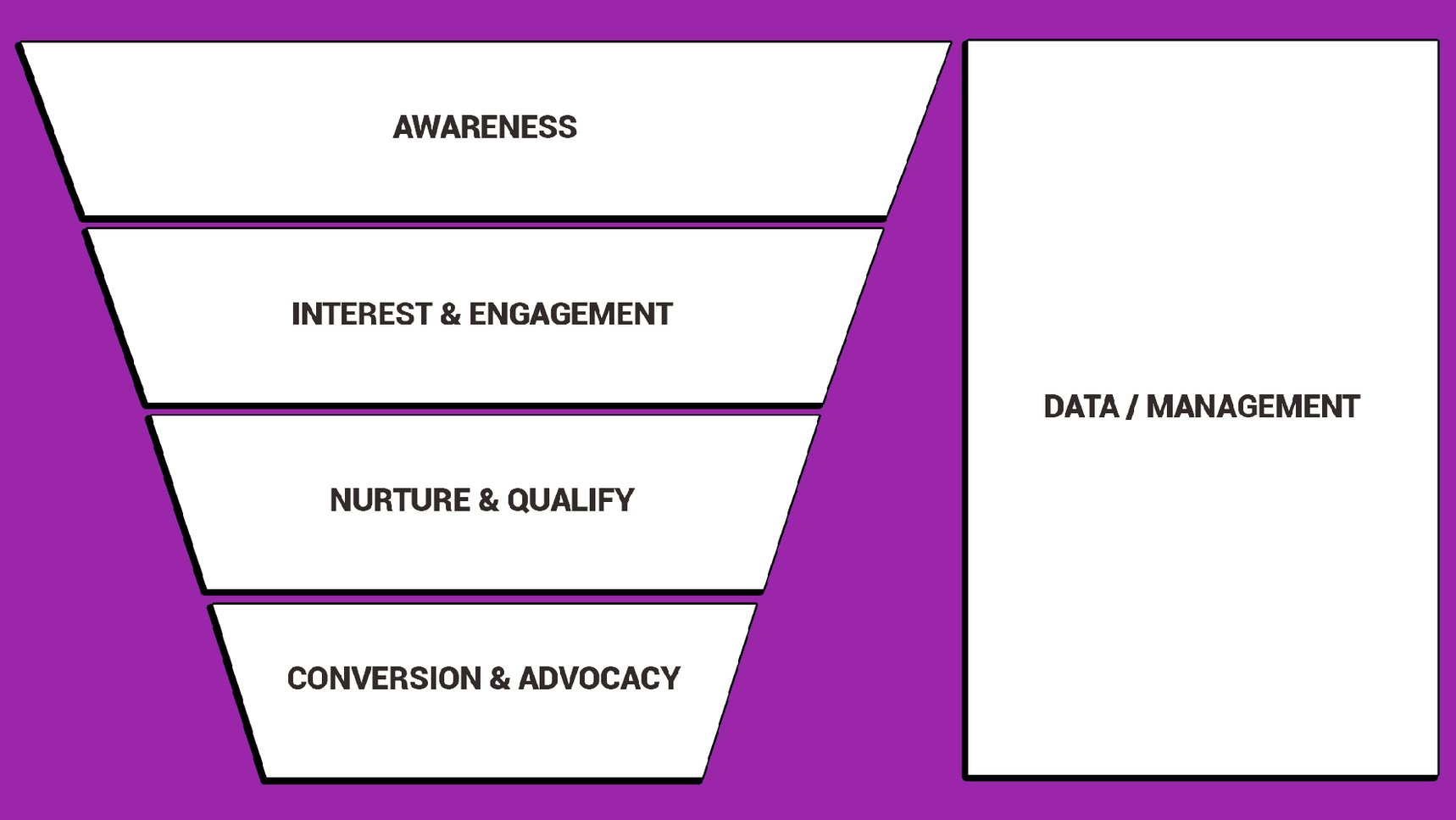
We could argue that the Marketing Technology Category approach is somewhat removed from the customer so, another approach we can take is to cut out the categories and apply them to a marketing and sales funnel.
We can use the marketing and sales funnel to map the stack across the entire customer experience, starting from awareness at the very top, all the way through to conversion and advocacy at the bottom. As we work our way from tip to toe of the funnel, we need to be asking ourselves “What do I need to provide a great CX?”
Hybrid Tech & CX Stack Design by MarTech Alliance
The 49 categories from the Marketing Technology Landscape can be an overwhelming amount to consider when designing the stack. At the MarTech Alliance, we’ve taken those 49 categories and compressed them into our 5 Fundamental Layers. These layers are broken down by the below.
Foundational Layer
Our foundational layer can also be referred to as the core systems. This layer serves as the stack’s back bone, the centre of which the rest of the marketing stack should be built on. This layer may contain tech such as:
- Data Warehouse
- Customer Data Platform (CDP)
- Marketing Cloud
- BI, Analytics & Attribution
CX & Engagement Layer
The tech in our CX & Engagement layer are the tools that impact the customer experience. In this layer we may see tech such as:
- Social Media Management and Listening
- CMS (Content Management System) & DXP (Digital Experience Platform)
- Digital Asset Management (DAM)
- Identity & Access Management (IDAM)
- Email Marketing / Marketing Automation
- Events & Meeting Tech
- Search Tech
- Digital Commerce
- Testing & Personalisation
- Sales tech
Working Management Layer
These are the tools that help us get work done and offer ways for the internal team to work collaboratively and efficiently across the board. In this layer, we see tech such as:
- Marketing Work Management (MWM)
- Project and Portfolio Management (PPM)
- Communication Tech
- Connection Layer
- Integration Platform as a Service / Cloud Integrators
- Extract Load & Transform (ETL)
- Data Management Platform (DMP)
- Custom API Services
Social & Internet Layer
This is the ecosystem outside of platforms that are directly in the business and used for other functionality across the stack. Platforms such as:
- Google Ads
- Clubhouse
- TikTok
Jigsaw Stack Design by MarTech Alliance
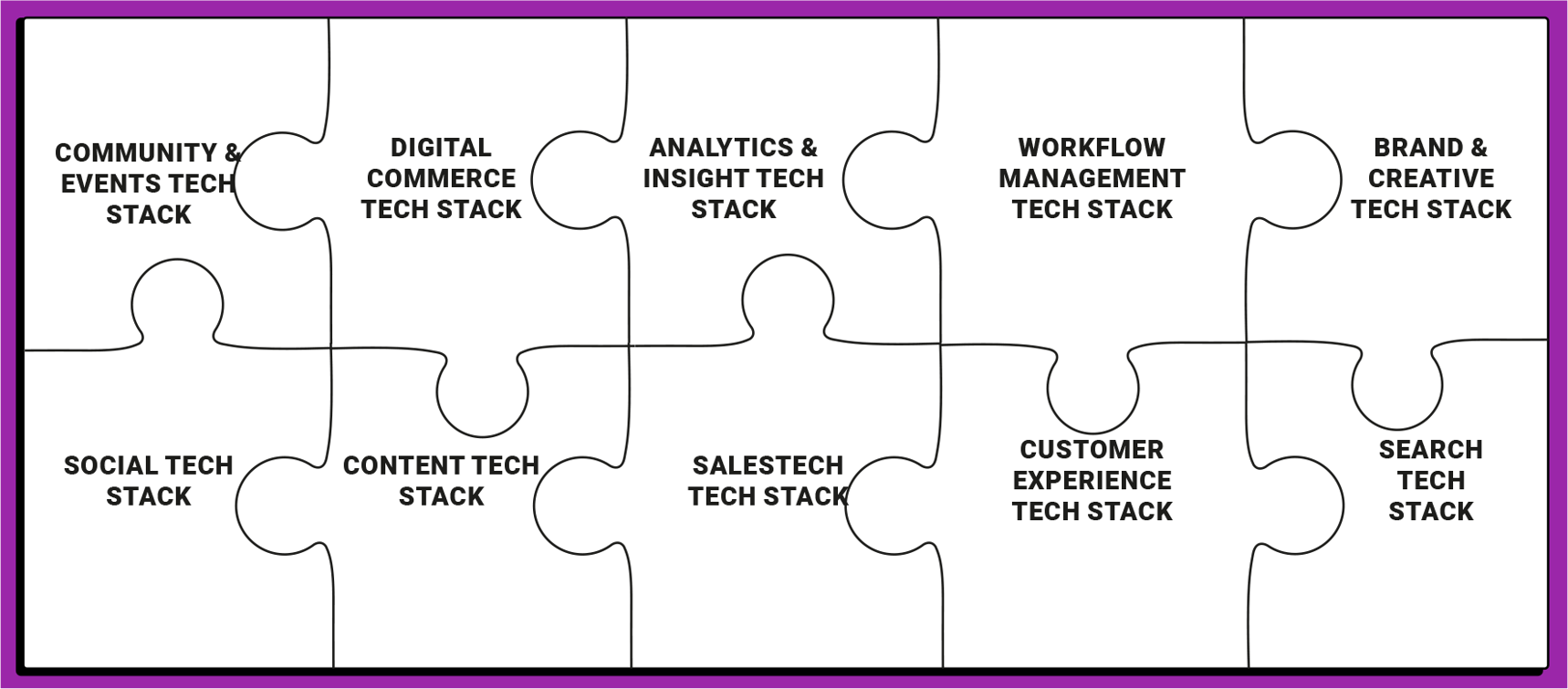
The Jigsaw Stack Design is another blueprint we have created here at the MarTech Alliance. This takes a micro stack by stack approach to solving each business use case by functional team. Initially isolating each stack by department/function before piecing it together into a holistic solution.
This approach is intended to take a bottom - up approach, narrowing in from the end users of each department the key requirements before thinking as a collective stack.
Whichever design we select, we will want to produce a current and target version to show the roadmap vision we have for developing the stack. The visual of the marketing stack is a fantastic document for communicating the tech we already have in place and the tech we want to introduce.
But this doesn’t show any of our data plumbing. That is, to show where the data is flowing or where there are blockages.
Data Plumbing Fundamentals
While this guide focuses on the technology within a stack, we shouldn’t underestimate the importance of the data management and architecture to the success of the running of our marketing stack.
Data travels, and it changes as it moves. It is fundamental to keep our data plumbing under control as the success or failure of the martech stack will often come down to how well we have designed our data modelling and architecture.
The goal for our data design is to achieve full integration and real-time seamless data flows across the stack. The first step to take in order to achieve this, is to map the flows we already have in place. This will highlight what is connected and what is isolated, what is manual and what is automated, what is real time and what has a delay.
Where isolated data is found, there are a number of possible solutions to explore.
Ecosystem Marketplace
A good place to start would be to check with the platform provider to see if they offer any existing out of the box connectors with other areas of the stack.
Integration-Platform-as-a-Service (iPaaS)
iPaaS software boarder on low / no code solutions and act as prebuilt push and pull connectors to move data from one system to another, regardless of whether the software is from the same provider.
Customer Data Platform
Most CDPs have extensive ecosystem marketplaces to make connecting quick and easy. CDPs are open to all data and can mix, match, push and pull to centralise and organise customer data.
Custom APIs
While custom APIs may not rank first for speed and ease, they will deliver the exact data as it is required.
This is a high-level overview of these types of solution, in reality a much deeper, sophisticated exercise is needed. This is where our Marketing Architect(s), Marketing Engineer(s) and/or data agency would explore the best possible solution to our data modelling design to provide a scalable and robust solution.
Go Shopping the Right Way
By now, we’ve assessed our current martech maturity and outlined our future state. We’ve identified some gaps in the stack and have an understanding of how to connect our data and systems.
Now that we have identified the problems within the stack, it’s time to start thinking about the new solutions needed.
But before jumping straight into the shopping, it’s important to adopt a methodical approach to any marketing tech selection and implementation. Below is an outlined approach we can use as a checklist to select new tech the right way.
- Internal requirement gathering & RFI
- Project steering committee established
- Business use cases
- Platform use cases
- Vendor score card
- RFP
- Vendor selection - Too often companies jump straight into their selection and it all goes wrong. Often, they do not spend enough time and money on what follows either.
- Proof of concept
- Implementation & configuration
- Stack integration
- Training & onboarding
- Support & upgrade
- Vendor management
- Audit & review
For more details on the right way to select tech, see our Fundamentals of Martech digital learning course.
Stack Management & Maintenance
Stack management doesn’t end once you have the marketing tech stack in place – no matter how extensive the planning and implementation may have been. In fact, it’s only just begun.
In order to build and maintain a powerful and scalable stack, we need to think of marketing stack management and maintenance as a continuous process.
Below are some key areas we recommend focusing on with practical steps we can take to ensure these processes remain efficient and effective ongoing and ultimately, help to get the most out of our stack.
Documentation & Spend Management
Martech stacks are made from multiple tools and used by multiple people, so keeping track of everything and ensuring nothing slips through the cracks is no easy task.
By collating extensive documentation of systems and processes we help drive greater utilisation and ultimately a greater ROI from the tech. Thorough documentation will also help us to be concise on spend management, ensuring all resources are used wisely, from time to budgets.
Detailed below is the key information we need to record and centralise:
- The tech currently in play
- Number of instances
- License cost, billing cycle and costing model
- Contract renewal dates
- The actual contract
- The key functions the tech performs
- Active and superusers of each platform
- System by system how to’s
- Vendor contact points and historic conversations
Committing to continually updating our records is vital to effective stack management. Failure to do so will result in problems such as auto renewing new contracts, bloated stacks with duplicate tech solutions and poor user access management - to name just a few.
It’s advisable to look at tools designed to help us better manage and record the details of our martech stack. That’s right, martech to manage martech; otherwise known as marketing stack management solutions. At the very least, we should have key documents of martech records and all other relating documentation, organised and centralised.
Onboarding, Training & Development
From a new hire, to an existing team member learning a new system, we need to ensure there is a rigorous on-boarding process system by system as well as embracing training provided by the platforms we have in play. Building into our training plans a need to get certified in the tech we have in our stack can drive adoption and best practice.
Beyond platform specific learning, there are also a host of martech/marketing operations training courses, events, communities, and key resources we should lean into (including Martech Alliance of course).
To create a structured process to this we should run capability assessments across our team ongoing to better understand any gaps in knowledge and skills. From this, we can develop training plans to upskill users and/or introduce new team members or agencies. Like any marketing discipline it is important to invest in both grounding of the martech fundamentals as well as continuous development.
Through our event series, best practice guides and digital learning course portfolio we have a host of ways to help keep upgrading.
The importance of this is highlighted by the Clevertouch State of Martech 2020/21 Report, as 72% of senior marketing leaders reported in viewing talent as more essential than technology, yet 53% continue to spend more money on tech than developing talent.
A shocking 28% of senior marketers view their in-house talent as competently trained in marketing technology, a lack of training further highlighted by the fact that only 18% of senior marketers report using an external partner or agency to upskill their employees.
The martech stack is only ever going to be as good as the people driving it, yet the thing holding most organisations back is the people. Commitment to continuous training is essential to martech success.
Data: Compliance & Security
From access management to data risks such as GDPR and CCPA, we need to ensure our data is compliant and secure.
Working closely with IT, legal and compliance teams we need to set up the necessary governance and systems to mitigate risk. Tied with this will be determining which department is responsible for which compliance and security measures.
Thoughts from the Field: Advice from Martech Leaders
Top advice from industry leaders on how to build a scalable and powerful martech stack.
What Does a Well-Built Stack Look Like?
Moni Oloyede, Senior Marketing Operations Manager, Fidelis Cybersecurity
Here are Moni’s top 5 ways to evaluate whether your stack is well built:
1. Best of breed vs. Integrated ecosystem suite approach
First, start with your approach. There is no right or wrong, it comes down to what is best for your organisation, but make sure you’re clear on which approach you will lean into.
2. Data integrity
Do you have a strong handle on the integrity of your data? If you can get the proper outputs, then you know that you have the proper inputs.
3. Seamless integration
Ask yourself, “Are my integrations seamless? Do they break and do you have to routinely manage them? If I make one change in one tool does it affect or hurt the integration and other tools?”
4. Personal & skills
Will the team need to adopt new skills in order to use the stack? Lack of skill and training can cause a big gap in your stack efficiency.
5. Goals
The main purpose of your marketing stack is to track and measure the goals of the business. If you cannot do this in an efficient manner, your stack is not well-built.
Top 3 Recommendations When Selecting Tech for Your Stack
Apoorv Durga, Marketing Technologist, Altudo
When selecting tech for your stack, Apoorv recommends:
- While selecting products, follow a structured approach based on your specific needs and use cases. Don’t select based on demos or their positioning in specific analyst reports. Sure, use those as inputs, but apply your own process.
- Include a PoC as part of selection (even if you have to pay for it). Make sure you give your data and your use cases.
- Don’t jump into tech selection directly, first ensure you:
- Do a business case that includes measurement criteria
- Arrive at your specific goals
- Map them to use cases
- Audit what you already have
- Identify gaps and then do selection
Advice for Implementation
Satya Upadhyaya, Vice President - Campaign Optimisation, Marketing Capability & Change at Citi
When it comes to implementation, Satya recommends thinking about the marketing stack as an ‘experience stack’ and putting CX before the tech. Here are 3 top recommendations for implementation.
1. When looking at investing in a piece of technology, you also need to be investing in your staff and change management.
You should consider what proportion of the budget also needs to be allocated for change management in order to train and upskill staff to start using that capability right away.
2. Invest in your process, procedures, and policies.
Understanding that when you go from technology ‘A’ to technology ‘B’, it’s no longer going to operate as technology ‘A’. You need to be prepared to adapt to how the technology is going to behave rather than looking at technology to adapt to your way of thinking.
3. Consider how you connect the data in motion across multiple customer journeys across multiple touchpoints.
To provide a seamless customer experience, you need to have a good understanding of your processes and policies and how that looks through the customer’s lens. Your stack shouldn’t be something you can buy on the market; it should be wrapped around the internal organisation that needs to be continually improving to keep the customer at the heart of it all.
To stay one step ahead, make sure make sure you keep an eye on our upcoming events and MarTech Web Sesh’s with some of the greatest martech industry leaders.
Summary
This Marketing Stack Management eBook will serve as a practical guide for anyone looking to build and maintain a powerful martech stack. Working step by step through:
- Assessing the martech maturity of the current stack and identifying where there might be gaps
- How to design the stack, from the approach to the framework
- How to architect the stack
- How to map and connect data across the stack
- How to go tech shopping the right way
- How to maintain and manage the stack
Key Takeaways
Before looking to implement new solutions to the stack, we must first evaluate our current state of maturity, starting with a gap analysis exercise. This will act as the base from which we can build on.
The next step is choosing our approach. From best of breed, best of suite or even hybrid, there is no right or wrong answer, it simply comes down to what is best for the organisation.
No matter which approach we select, it is important to better frame the tech we already have and the tech we need to deliver on our business use cases. When doing this, we should focus on the solution types rather than tech providers.
When it’s time to get down to the data, the goal is to achieve full integration and real-time seamless data flows across the stack. It is fundamental to keep our data plumbing under control as the success or failure of the martech stack will often come down to how well we understand our data modelling and architecture.
But stack management doesn’t end once we have a marketing stack in place, in fact it’s only just begun. We need to continue to review and renew the stack by keeping a handle on documentation & spend management, onboarding, training & certification and data, compliance & security.
Itching to learn more? Enrol on our Fundamentals of Marketing Technology: The 4Ps of Marketing Technology online course.

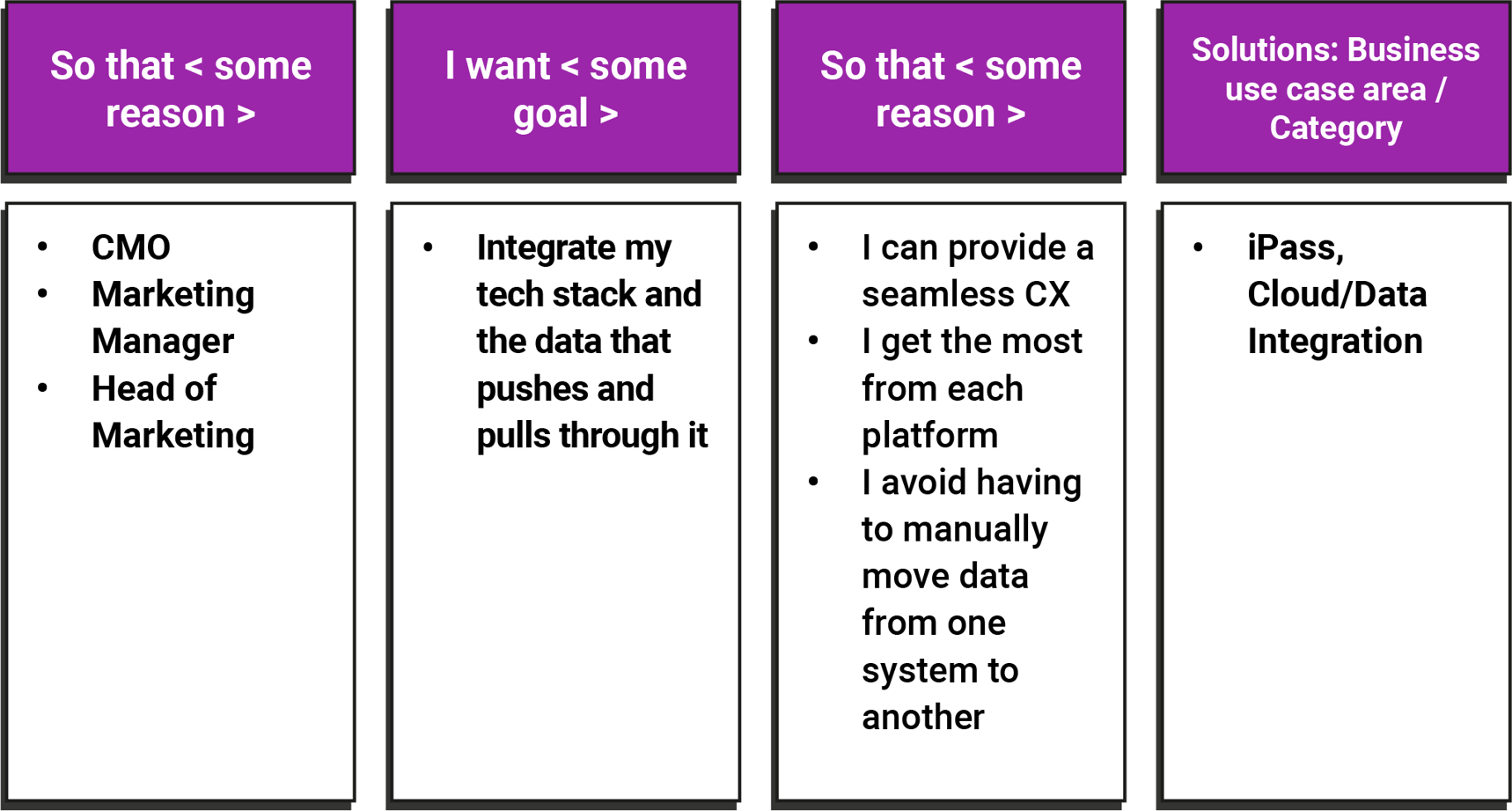
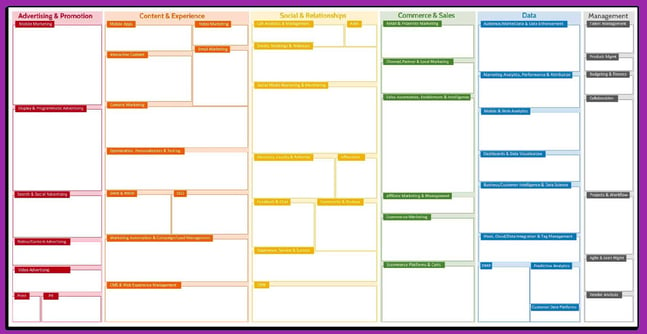
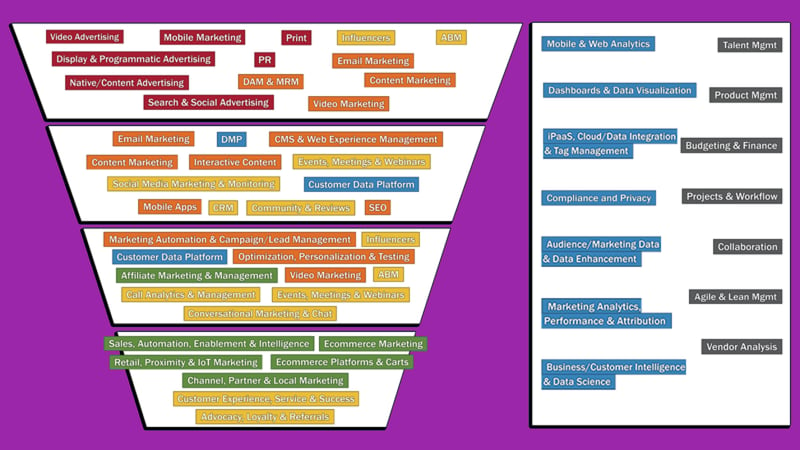
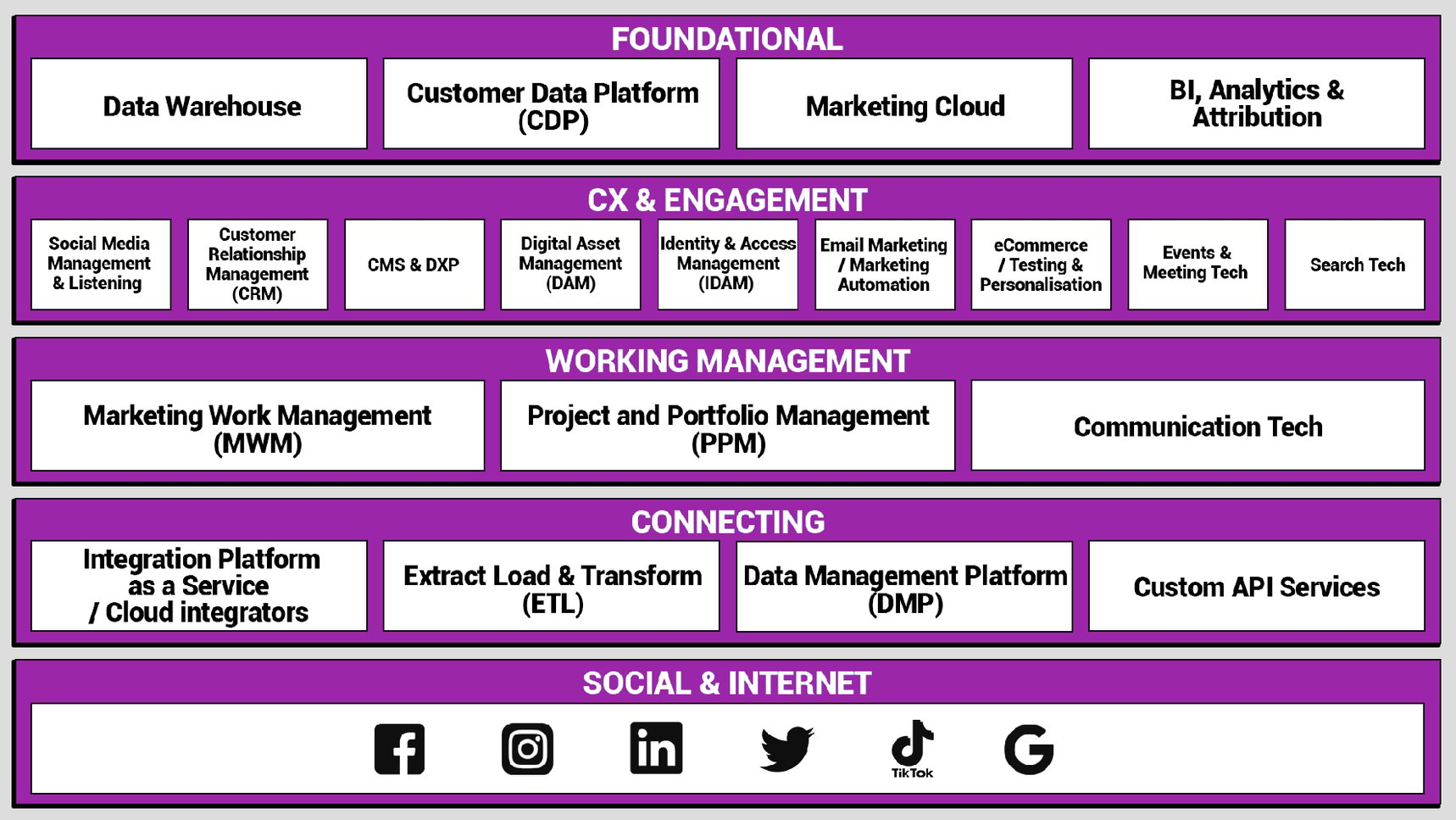

.png?width=300&name=Satya%20Upadhyaya%20Hexagon%203%20(2).png)